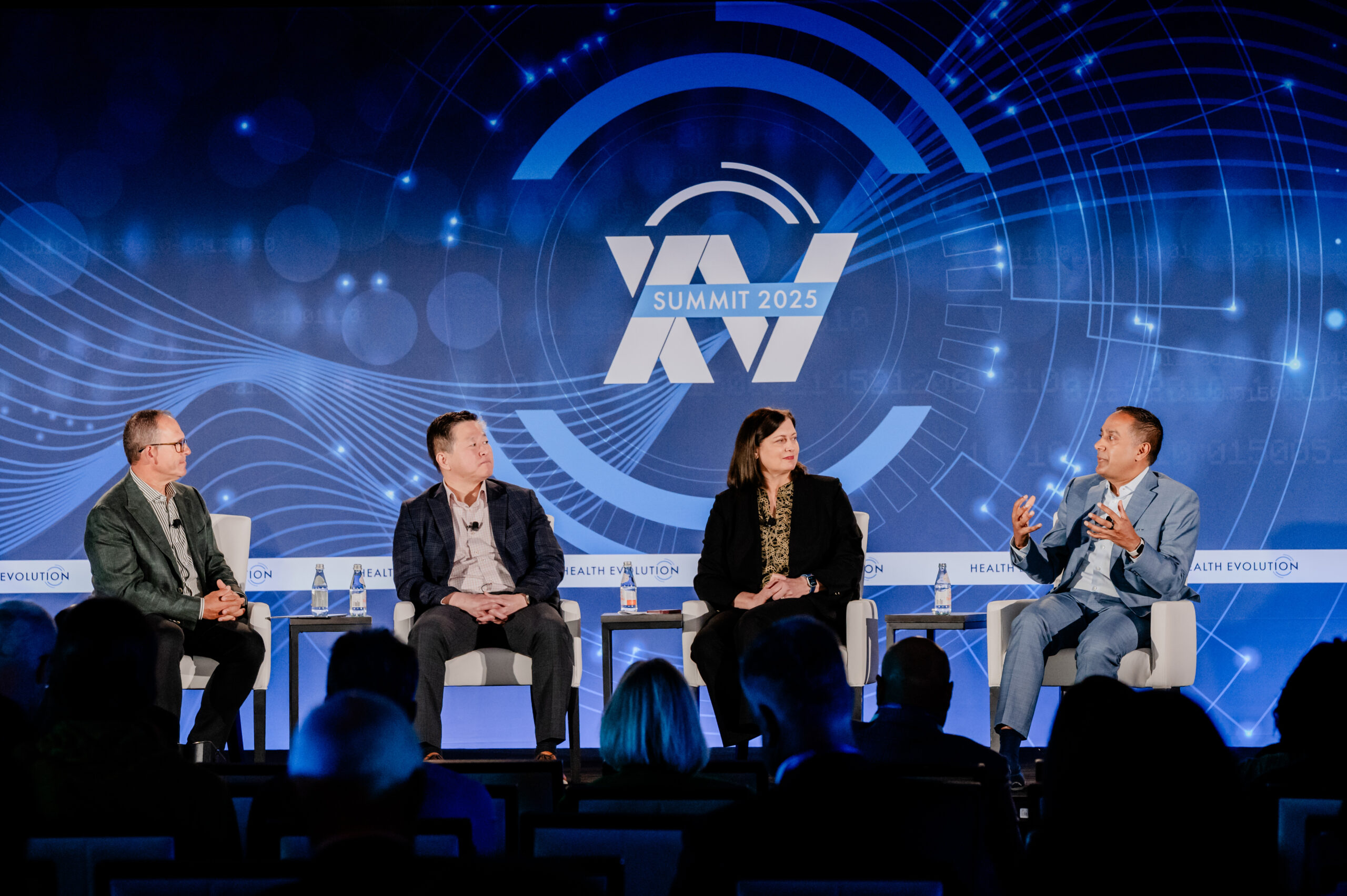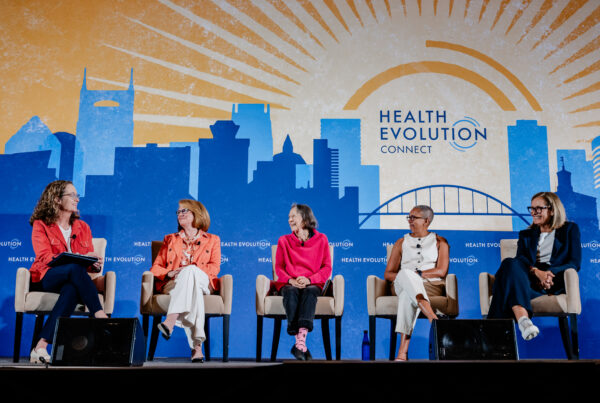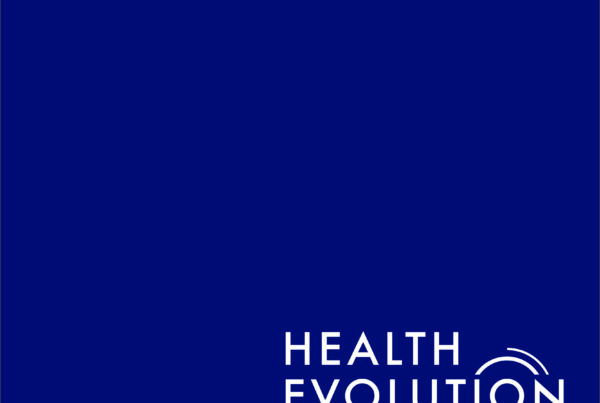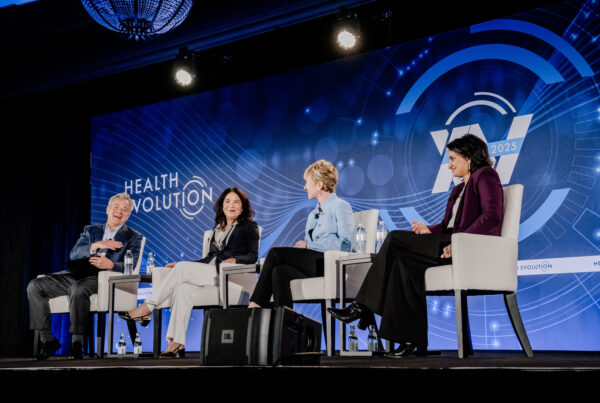Transforming health care is an ambitious goal—it requires bold action, decisive leadership, and a shared commitment across the system. As public trust wavers and systemic challenges intensify, executives must lead with greater conviction, transparency, and synergy to truly champion progress.
At our 2025 Summit, health care leaders and cross-industry experts gathered to confront the realities of this moment and explore what it will take to drive meaningful, lasting change. These powerful conversations featured insights from transformational leaders, including:
- John Doerr, Chair, Kleiner Perkins
- Rod Hochman, MD, CEO Emeritus, Providence
- Sachin Jain, MD, MBA, President, CEO, and Board Director of SCAN Group and Health Plan
- Omar Lateef, President & CEO, Rush University System for Health and Rush University Medical Center
- Chris Michalak, Executive Chairman, Personify Health
- Jonathan Perlin, MD, PhD, President & CEO, Joint Commission
- Amy Perry, President & CEO, Banner Health
- Jaewon Ryu, CEO, Risant Health
Read on to learn how leaders can embrace bold commitments to drive lasting change.
Leading Health Care Forward: A Renewed Commitment to Bold Change
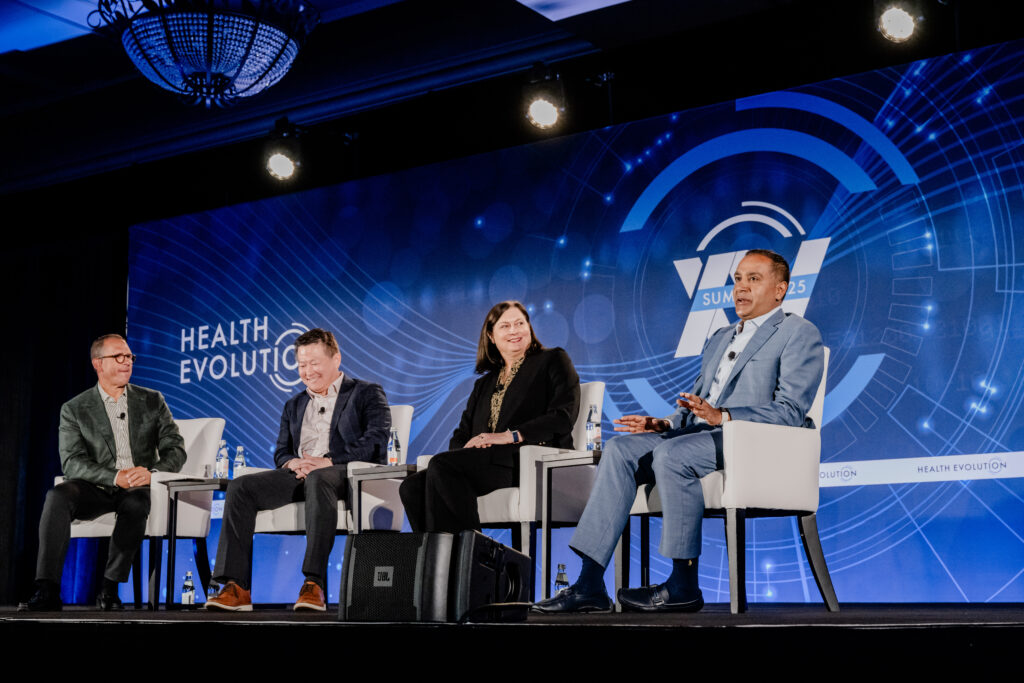
Achieving a bold, new vision for health care requires courageous leadership and collective action. In a conversation entitled “Leading Health Care Forward: A Renewed Commitment to Bold Change,” Michalak moderated a discussion with Jain, Perry, and Ryu to explore what industry leaders must do to restore trust, improve affordability, and lead health care into the future.
To drive effective change, health care leaders must confront the root-cause problems facing the industry. Discussion leaders called out several focus areas executives should prioritize as they shape the future of health care.
“We need to rebuild trust,” Perry said. “Looking back, we would’ve never imagined how our organizations have lost basic trust with our communities, with our consumers, with our employers. So, I think that that is an incredibly important focus area.”
In addition, access and affordability remain two of the most critical challenges in health care. “These are fundamental opportunities we need to address,” Perry noted.
Discussion leaders also acknowledged a high degree of toxic positivity across the industry—where surface-level optimism often overshadows the deeper, more honest dialogue needed to improve the system.
“I think we need a massive cultural change in the leadership of U.S. health care institutions,” Jain said. “And it starts with having very different conversations that are grounded in more revolutionary thinking.”
To drive this cultural shift and champion introspection, executives must foster open, honest communication—both within their own organizations and across the industry. “At a leadership level, you must have more candid conversations,” Jain said.
Leaders must also be willing to go against the grain to drive meaningful change—taking risks, embracing discomfort, collaborating with both partners and competitors, and acting before the ideal solution is clear, the discussion leaders said.
“We need a high tolerance for risk and a higher tolerance for ambiguity. We’re not going to have all the answers. We need to be able to lean in, and we’ll do it better together,” Perry asserted.
This shift requires leadership teams to make bold, strategic commitments to drive positive transformation—even if they feel uncomfortable or risky—and to bring in individuals who are innovative, resilient, and unafraid to pursue revolutionary ideas.
“Rather than shying away from change, leaders must embrace a world that’s going to be continually evolving,” Ryu said. “I think that’s what the industry needs. I think that’s what serves organizations and communities well, and I think it’ll position us better for the future.”
Michalak echoed this imperative and called on leaders to prioritize “the integrity of health care delivery and keep organizations on the right side of health care at every step of the way.”
Bridging the Gap: Fireside Chat with John Doerr and Dr. Omar Lateef
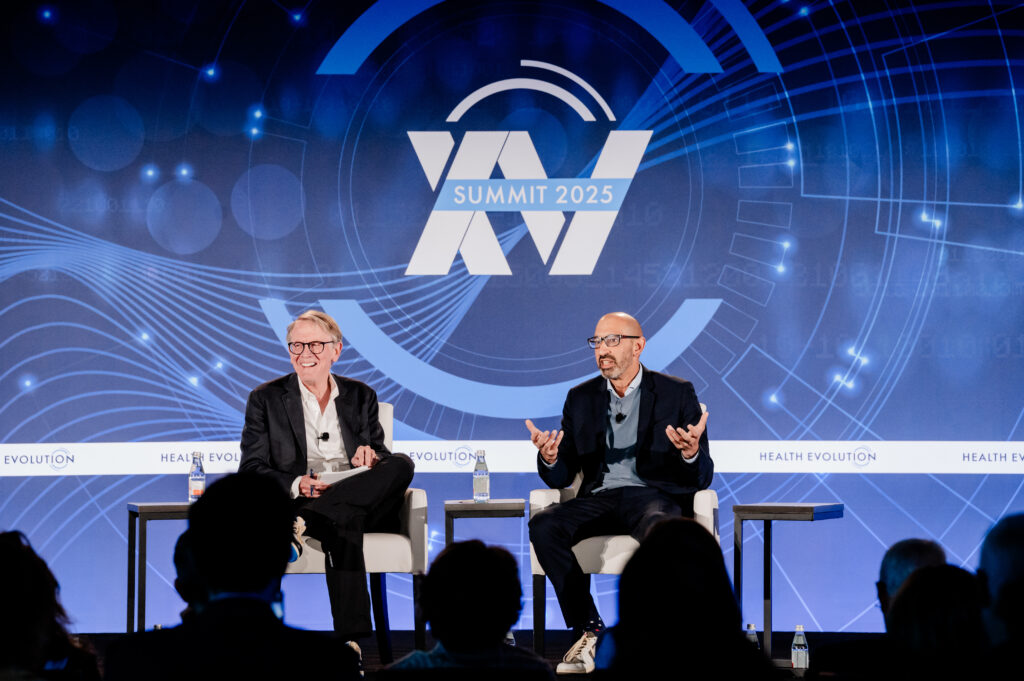
Despite years of innovation, troubling gaps exist across the health care ecosystem. Among those we serve, disparities in outcomes, access, and experience continue to persist. And within the health care industry, misalignment stymies meaningful progress.
In a fireside chat entitled “Bridging the Gap,” Doerr and Lateef explored how bold leadership and cross-industry collaboration can help close gaps and drive lasting impact. Specifically, Doerr acknowledged the “deep divides between technology, efficiency, and outcomes,” and posed a central challenge: bridging the gap between innovators, investors, and those delivering care.
Lateef noted it is “extraordinarily expensive” to solve problems in our current health care ecosystem, and while other industries can respond to challenges with agility and flexibility, health care remains slow to change—held back by deep inefficiencies, complexity, and heavy regulation. “We can’t build consensus. We can’t change, we can’t evolve,” Lateef said.
Part of the problem is that health care organizations largely have struggled to leverage technology to boost efficiency and streamline consumer experience the way other industries have done. “We continue to have this tremendously inefficient system, and yet we’re trying to solve it from inside out,” Lateef said. “We have to figure out how to partner with people who have solved these problems in an efficient way,” he noted.
Both Lateef and Doerr emphasized the opportunity at the intersection of technology and health care, recognizing AI’s potential to accelerate innovation and transformation. “I think health care is the best and highest calling for revolutionary technological advances,” Doerr said.
Lateef also underscored the need for stronger communication and cross-industry collaboration to ensure the right problems are addressed, as innovators often create solutions that aren’t aimed at the industry’s biggest problems. “We need to partner better with the world outside of health care to say, ‘these are the biggest problems we have. How can you help us solve these?’” he said.
Lateef emphasized that lasting transformation hinges on collective action. “If everything every health center does improves their community, we’ll start to drive meaningful change,” he said. “I think that’s possible. I think that’s scalable.”
Capstone Conversation: Fireside Chat with Dr. Rod Hochman, CEO Emeritus of Providence
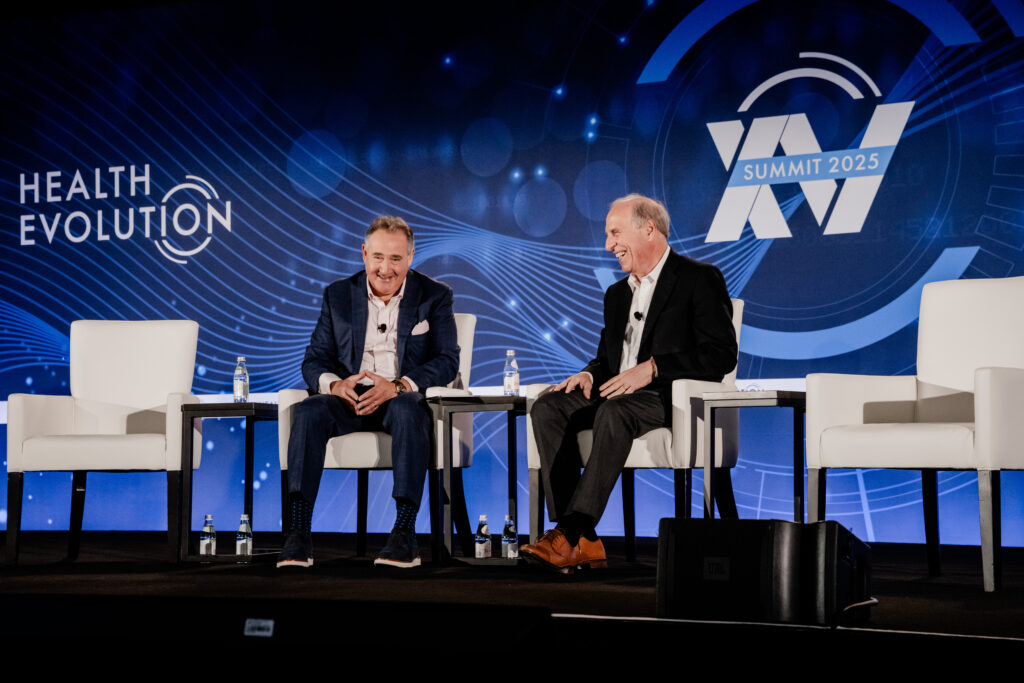
For the grand finale of Summit, Perlin sat down with Hochman to reflect on 45 years of service in health care and explore the industry’s future. Together, they unpacked the innovations and leadership imperatives that define the future—and the transformational power of collaboration to drive outsized impact.
Drawing on their decades of experience, Perlin and Hochman acknowledged that health care has become more complex than ever. “This is a complex world operationally,” Perlin said. “I don’t think health care has ever been more complex financially. Clinically, the innovations are extraordinary—but also complex. And politically, I think we must acknowledge it’s complex,” he explained.
Hochman noted the industry is at an inflection point that demands new, innovative solutions to address the deep-rooted structures driving many of today’s issues. “We just can’t keep doing the same thing we’re doing. Leaders must understand that they have to do things differently,” Hochman said.
“Our work is at the intersection of innovation and compassion,” Hochman continued. “We need to find the sweet spot between compassionate care and innovative solutions,” he urged.
Meaningful innovation requires bold action and the courage to challenge the status quo, take risks, and lead through uncertainty, the leaders said. Executives need to cultivate a culture where they welcome being challenged and see failure as a necessary step on the path to lasting change.
Hochman specifically underscored the imperative to democratize data to unite diverse stakeholders, foster transparency, accelerate learning, and uncover data-driven solutions to the complex challenges facing the industry. “We’ve got to be able to make the system smarter and there’s so much we could do collectively,” he said.
Further, the leaders noted that moving the needle on issues that directly impact consumers—including mental health, food insecurity, access to care, and community care—requires partnership. “Those are not competitive things—they are challenges we should all be working on together,” Hochman said.
“Many people agree that our health care system isn’t entirely rational,” Perlin recognized. “And it’s an overwhelming challenge to try to re-engineer at scale.” Despite the challenges ahead, Perlin expressed optimism about the potential to shape a stronger, more effective health care system.
To drive lasting change, Hochman advised, “we need to bring like-minded people together and take action.” He concluded, “We can’t give up on something that’s so important for our country, our communities, and our people.”

